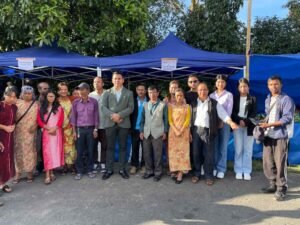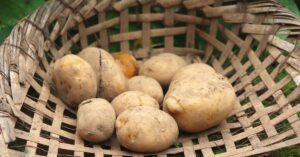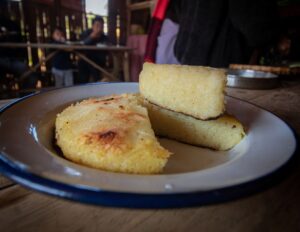Sericulture in Meghalaya, particularly with eri and muga silk, is integral to rural livelihoods. Eri silk, known as “Ahimsa silk,” involves rearing Samia cynthia ricini silkworms on castor plants. Muga silk, valued for its golden hue, comes from Antheraea Assamensis silkworms fed on Ocotea Acutifolia trees. These traditional, sustainable practices provide employment and preserve cultural heritage. The government supports sericulture through training and improved techniques, enhancing socio-economic benefits. Environmentally friendly methods ensure minimal impact, promoting biodiversity and soil health. Sericulture in Meghalaya combines economic growth with cultural and ecological sustainability.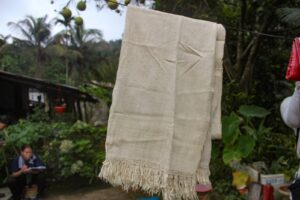
Sericulture is a sizable rural agro-based enterprise with the capacity to compensate marginal and small farmers. The primary tasks of sericulture are the cultivation of food plants for the silkworms that spin silk cocoons, as well as the reeling of the cocoons to release the silk thread for processing and weaving into valuable goods.
The people of Gondenggre community, West Garo Hills , have been involved in sericulture for generations, a craft passed down from their ancestors. They primarily rear Antheraea Assamensis, the muga silkworm, for commercial use according to traditional norms. Instead of spinning the muga thread, which is time-consuming, they often sell raw cocoons or larvae. The community members also rear the silkmoth to consume the larvae.
Kosilok T. Sangma, a 48-year-old native of Gondenggre, began rearing muga silkworms in 2021. His commitment to mastering this craft led him to attend two crucial one-day training programs: one in Tura and another in Asanang, both organized by the Horticulture Department from 2016-2017. Sangma’s venture represents both a personal journey and a local commitment to sustainable agricultural practices. Initially, he purchased a single ovum for five rupees from a resident of Saringgre community, later acquiring multiple ova to expand his operation.
Management Practices
Muga silkworms on Ocotea acutifolia trees are managed with strategic measures:
- A plastic sheet at the tree trunk base prevents insects from descending.
- Nets protect silkworms from avian predators, especially in the early stages.
- Human supervision replaces nets as insects mature, deterring birds and other threats.
Sangma highlights rain’s importance in preventing fly eggs on the insects, safeguarding their life cycle. These comprehensive measures ensure an environment conducive to the muga silkworms’ growth, contributing to Sangma’s successful enterprise.
The management of Ocotea acutifolia trees includes regular weed and grass clearing, pruning, and seed cultivation to sustain a flourishing ecosystem for silkworm rearing.
Kong Kaprol Syiem, a permanent resident of Borgang Marngar community, has been engaged in the art of silkworm rearing since a young age and continues this practice today. She initiated her silkworm-rearing venture to supplement her family’s income, while her primary occupation remained centred around agriculture. Her humble abode consists of a small hut where she diligently nurtures her silkworms. Additionally, she contributes to her family’s financial well-being by selling silk cocoons in the local market.
Samia cynthia ricini, the Eri silkmoth, belongs to the Saturniidae family, which includes giant silk moths. Eri silk, known as “ryndia” by the Khasi people, is produced by the domesticated silkworm Samia cynthia ricini. Bah Rosting Nongpluh, a permanent resident of Khliehumstem community, has been engaged in the practice of raising silkworms from a young age, acquiring the skills of his ancestors. This activity has allowed him to generate additional income to support his family, although it is not his sole source of livelihood. Bah Nongpluh’s primary occupation is centred around agriculture.
Four years ago, Kong Dondor Sakra began raising silkworms after learning how to do so from an elderly villager. She purchased the silkworms (young larvae) from Kdong Hulu, an adjacent community, for roughly 30 rupees per matchstick box. Kong Memorial Sakra began raising silkworms six years ago after noticing that neighbors from other communities were also doing so. She was intrigued by what she observed and began what would eventually become her pastime. Plant species used for feeding the Eri silkworms include Sla rynda (castor leaves), Ding jri kynjor, and Sohlah kya.
Traditional Knowledge of Cloth Weaving
Weaving is a textile art or craft in which cloth is formed by interlacing two distinct sets of threads known as the warp and weft at right angles. Cloth weaving, one of the oldest crafts practiced by community members, has been passed down from generation to generation. Cloth weaving is mandatory for every household, so each house has at least one loom. Therefore, the community members do not do it for profit or to earn money but for their own basic needs, such as making their traditional clothes, except in a few cases where they receive orders. The community members use traditional hand looms for weaving the cloth, such as the fly shuttle loom. 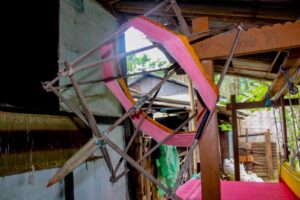
Tools and equipment required include bobbin (locally known as Mobin), charkas (locally known as shirki), herklin (local name), warping drum (locally known as jatar), heddles and reeds, shuttle, pedals, and threads/yarns. Products woven include Phali (local name), Lara (local name), Ryndia (local name), Kamsa (local name), and Mekhli (local name).
The process of weaving involves interlacing two or more different yarns or threads to create a fabric or cloth. Weaving is a unique and age-old traditional technique that is considered a source of identity and pride for the communities concerned, and the persistence of handloom terminology attests to its deep-rooted significance for them. In Umngei community, weaving clothing has great significance since the locals wear these garments only on traditional or auspicious occasions because they have a distinctive pattern that represents the community. A large portion of the technology is ancient and has not changed in more than a thousand years. The ability to weave is typically passed down from one generation to the next, although it also depends on the local population’s interest.
Kong Siri Lyngdoh, a permanent resident of Umngei, started the art of weaving in 1970. Weaving has been her side income as agriculture was her main income. She got interested in weaving after her elder sister, who lived in the nearby community, taught her how to do it. She took a keen interest in weaving as she believed in preserving the traditional way of weaving clothes and stitching traditional attires. She received an award from Hima Khadar Lyngdoh Weaving Handloom and Handicraft Union for her dedication and unique way of weaving traditional clothes. She desires to teach the younger generations about the traditional way of weaving and help people to be more engaged in weaving in the community. Types of products crafted include jainkhyndoktawah, jainiong, jain pain and jain pan.
Meghalaya’s rich cultural heritage of sericulture and weaving form an intricate pattern of tradition, sustainability, and community resilience. It stands as a testament to generations of knowledge passed down through the ages. The dedication of certain artisans highlights the enduring commitment to preserving both livelihoods and legacies. Through the NESFAS project “Protection of Forests in Meghalaya by Adopting Participatory, Gender-Centric, and Equitable Approaches,” supported by The Nature Conservancy, detailed documentation through the People’s Biodiversity Register (PBR) offered valuable insights into the intricacy of handwoven textiles. The community honours not just a craft, but a way of life—of resilience, sustainability, and cultural heritage woven with threads of hope for the future.

